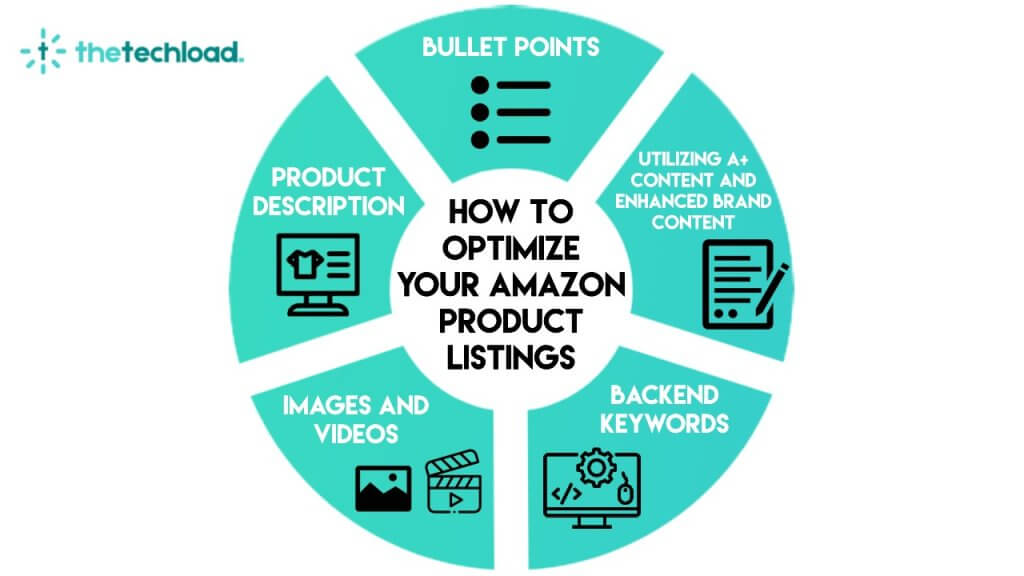Understanding the competitive world of Amazon’s marketplace can be tough, especially when your product’s visibility relies on the factors of Amazon A9 ranking. Imagine spending hours improving your product listing, only to see it get lost among many competitors. This frustration is common when sellers overlook the key elements that Amazon’s A9 algorithm uses to rank products.
By focusing on these key factors, you can improve your product listings, increase sales, and move up in Amazon search results. This guide will delve into the key factors of Amazon A9 ranking and provide insights on how to optimize your listings accordingly.
What is Amazon’s A9 Algorithm?
Amazon’s A9 algorithm is used to rank product listings in search results on Amazon. It is similar to traditional search engines like Google but has distinct differences.
The A9 algorithm prioritizes product listings with strong sales and conversion histories over those simply filled with keywords. This cumulative effect means that products with higher sales will rank better in search results.
Since Amazon’s main goal is to sell products, its algorithm tends to favor high-performing ASINs (Amazon Standard Identification Numbers). To keep your products ranked well, they need to convert well when searched by consumers. If they don’t perform well, they may end up ranked lower.
Importance of understanding the factors influencing Amazon A9 ranking
Amazon’s A9 algorithm is a critical component of the Amazon search ranking system. It determines the placement of product listings in search results, which directly impacts visibility and sales.
Mastering the factors of Amazon A9 ranking can give sellers a competitive edge, allowing them to optimize their listings effectively.
By understanding these factors, sellers can ensure their products are prominently displayed, thereby increasing their chances of attracting potential buyers and boosting sales.
What are the Factors of Amazon A9 Ranking?
Here are the factors of Amazon A9 ranking:
- Keywords Placement
- Accurate categorization
- Sales Velocity
- Conversion Rate
- Customer Satisfaction
- Inventory Management
- Advertising and Promotions
- Content Quality
- Backend Optimization
- External Traffic
Relevance Factors of Amazon A9 Ranking
One of the primary factors of Amazon A9 ranking is relevance. The Amazon A9 search engine assesses how well a product listing matches the search query. This involves several elements:
1. Keywords Placement
- Title Keywords: Incorporating relevant keywords into the product title is crucial. The title should be clear and concise while containing the main keywords that potential buyers are likely to use.
- Backend Search Terms: These are hidden keywords that don’t appear on the product listing but are used by the Amazon algorithm process to match search queries with listings.
- Bullet Points: Highlighting key features and benefits in bullet points, enriched with keywords, helps in ranking.
- Product Description Keywords: A detailed product description with strategically placed keywords enhances relevance.
2. Category and Subcategory
Accurate categorization ensures that products are listed in the right sections, making it easier for customers to find them. Proper categorization aligns with the Amazon ranking formula to improve visibility.
Performance Factors of Amazon A9 Ranking
The performance of a product listing significantly affects its ranking. The Amazon product ranking system takes into account several performance metrics:
1. Sales Velocity
- Number of Sales: Higher sales volumes indicate product popularity, which positively influences ranking.
- Historical Sales Data: Consistent sales over time contribute to better ranking, showcasing the product’s reliability and appeal.
2. Conversion Rate
- Product Reviews and Ratings: Positive reviews and high ratings are crucial. They build trust and encourage more sales, which in turn boosts ranking.
- Price Competitiveness: Competitive pricing attracts more buyers, increasing sales and improving ranking.
- Quality of Product Images and Videos: High-quality visuals enhance the customer experience, leading to higher conversion rates and better ranking.
Customer Satisfaction Factors of Amazon A9 Ranking
Customer satisfaction is a pivotal element in the Amazon A9 algorithm functioning. Satisfied customers are more likely to leave positive reviews and make repeat purchases:
1. Customer Reviews and Ratings:
The quantity and quality of reviews significantly impact ranking. Products with numerous positive reviews rank higher.
2. Return and Refund Rate:
A low return rate indicates customer satisfaction, positively influencing ranking.
3. Customer Service:
Responsive and helpful customer service contributes to higher satisfaction levels, impacting the Amazon ranking mechanism.
Inventory Management Factors of Amazon A9 Ranking
Effective inventory management is essential for maintaining a high rank on Amazon:
1. Stock Availability
Consistent stock availability prevents sales interruptions and maintains ranking.
2. Fulfillment Method
- Fulfillment by Amazon (FBA): Products fulfilled by Amazon often rank higher due to faster delivery and better customer service.
- Prime Eligibility: Prime-eligible products are more attractive to customers, leading to higher sales and better ranking.
Advertising and Promotional Factors of Amazon A9 Ranking
Advertising and promotions can significantly enhance the factors of Amazon A9 ranking:
1. Sponsored Products:
Paid advertising boosts visibility, driving more traffic and sales to the listing.
2. Promotions and Discounts
Lightning Deals: Time-limited promotions increase sales velocity, improving ranking.
Coupons and Special Offers: Discounts attract more buyers, enhancing conversion rates and ranking.
Content Quality Factors of Amazon A9 Ranking
High-quality content is essential for engaging customers and improving ranking:
1. Product Descriptions:
Detailed and informative descriptions with relevant keywords help in ranking.
2. Enhanced Brand Content (EBC):
A+ content and rich media provide a better shopping experience, leading to higher conversion rates.
3. Image and Video Quality:
Professional, high-resolution images and informative videos attract more customers, boosting ranking. Consider a Product Photography Service for high quality images that stand out.
Backend Optimization Factors of Amazon A9 Ranking
Optimizing backend elements is crucial for improving Amazon A9 algorithm functioning:
1. Effective Use of Backend Keywords:
Including relevant and complete backend keywords helps in matching search queries.
2. Proper Categorization:
Accurate attributes and categorization align with the Amazon algorithm working to improve ranking.
External Traffic Factors of Amazon A9 Ranking
Driving external traffic to Amazon listings can positively influence ranking:
1. External Marketing Efforts:
Traffic from social media, blogs, and influencer marketing can boost sales and improve ranking.
2. Impact of External Traffic on Rankings:
External traffic signals to the Amazon A9 search engine that the product is popular, enhancing ranking.
How to Optimize Your Amazon Product Listings

Optimizing your Amazon product listings is crucial for improving visibility, increasing sales, and achieving better keyword rankings. Effective Amazon SEO involves several key components, each contributing to the overall performance of your listing.
Here’s a detailed guide on how to optimize your Amazon product listings:
1. Bullet Points
Bullet points are one of the first elements that customers see when they view your product listing. They provide a concise overview of the product’s key features and benefits. To optimize your bullet points:
- Highlight Key Features: Clearly state the main features of your product. Focus on what makes your product unique and why customers should choose it over competitors.
- Use Keywords Strategically: Incorporate relevant keywords naturally into your bullet points. This helps with search visibility and ensures that your listing appears in relevant searches.
- Be Concise and Informative: Keep bullet points short and to the point. Avoid lengthy descriptions and focus on providing valuable information quickly.
- Focus on Benefits: Highlight the benefits of your product, not just the features. Explain how the product can solve a problem or improve the customer’s life.
2. Product Description
The product description provides a more detailed explanation of your product. It’s an opportunity to persuade potential customers and provide them with all the information they need to make a purchase decision. To optimize your product description:
- Use a Clear Structure: Organize your description into easy-to-read paragraphs. Use subheadings, bullet points, and short paragraphs to improve readability.
- Include Keywords Naturally: Integrate relevant keywords throughout the description, but avoid keyword stuffing. The text should flow naturally and make sense to the reader.
- Highlight Unique Selling Points: Emphasize what sets your product apart from competitors. Focus on unique features, high-quality materials, or innovative design aspects.
- Tell a Story: Engage customers by telling a story about your product. Explain the inspiration behind it, how it was developed, and the benefits it offers.
- Use Persuasive Language: Use compelling language to encourage customers to take action. Highlight any guarantees, warranties, or special offers.
3. Images and Videos
High-quality images and videos are essential for attracting and retaining customers. They provide a visual representation of your product and help customers understand its features and benefits. To optimize your images and videos:
- Use High-Resolution Images: Ensure all images are high-resolution and professionally taken. Clear, sharp images create a positive impression and help customers see the details of your product.
- Show Multiple Angles: Include images that show your product from various angles. This gives customers a comprehensive view and helps them make an informed decision.
- Highlight Key Features: Use close-up shots and infographics to highlight key features and benefits. Show the product in use to help customers visualize how it works.
- Include Lifestyle Images: Lifestyle images show your product in real-life settings. This helps customers see how the product can fit into their lives.
- Add Videos: Videos are a powerful tool for demonstrating product features and benefits. Create short, engaging videos that showcase the product in action and highlight its key attributes.
4. Backend Keywords
Backend keywords are hidden keywords that don’t appear on the product listing but are used by Amazon’s search algorithm to match search queries. To optimize your backend keywords:
- Research Keywords Thoroughly: Use keyword research tools to identify relevant keywords that customers are using to search for products like yours.
- Include Synonyms and Variations: Incorporate synonyms, alternate spellings, and common misspellings of your primary keywords to capture a broader range of search queries.
- Avoid Keyword Stuffing: While it’s important to include relevant keywords, avoid overloading the backend fields with unnecessary or irrelevant terms.
- Use All Available Space: Make the most of the character limits in the backend keyword fields by including as many relevant keywords as possible.
- Regularly Update Keywords: Periodically review and update your backend keywords to ensure they remain relevant and effective.
5. Utilizing A+ Content and Enhanced Brand Content
A+ Content (formerly Enhanced Brand Content) allows brand owners to create visually rich product descriptions that can help drive more conversions. To optimize your A+ Content:
- Create Engaging Content: Use high-quality images, videos, and graphics to create an engaging and visually appealing product description.
- Highlight Brand Story: Share your brand’s story and values to build a connection with customers. Explain what sets your brand apart and why customers should trust your products.
- Focus on Key Features and Benefits: Use A+ Content to provide detailed information about the product’s features and benefits. Use comparison charts, infographics, and enhanced images to convey important details.
- Improve Readability: Use clear headings, bullet points, and short paragraphs to make the content easy to read and understand.
- Measure Performance: Monitor the performance of your A+ Content using Amazon’s analytics tools. Adjust and optimize based on customer engagement and feedback.
Conclusion
Understanding and optimizing the factors of Amazon A9 ranking is crucial for improving product visibility and boosting sales on Amazon. By focusing on keyword placement, sales velocity, customer satisfaction, and content quality, sellers can achieve higher rankings and increased revenue.
At TheTechLoad, we help businesses master Amazon’s A9 ranking system. Our expertise in Amazon SEO ensures your listings are optimized to meet the algorithm’s criteria.
From keyword research to advertising, we offer services to improve your rankings and drive sales growth. Partner with us to leverage the factors of Amazon A9 ranking to your advantage.
FAQs
Do reviews affect Amazon A9 ranking?
Yes, positive reviews can improve Amazon A9 ranking.
How important are keywords for Amazon A9 ranking?
Keywords are crucial as they help the algorithm understand product relevance.
Does price impact Amazon A9 ranking?
Competitive pricing can positively influence Amazon A9 ranking.
Is product availability a factor in Amazon A9 ranking?
Yes, in-stock products rank higher in Amazon A9.
How do sales velocity affect Amazon A9 ranking?
Higher sales velocity can boost Amazon A9 ranking.






One Response